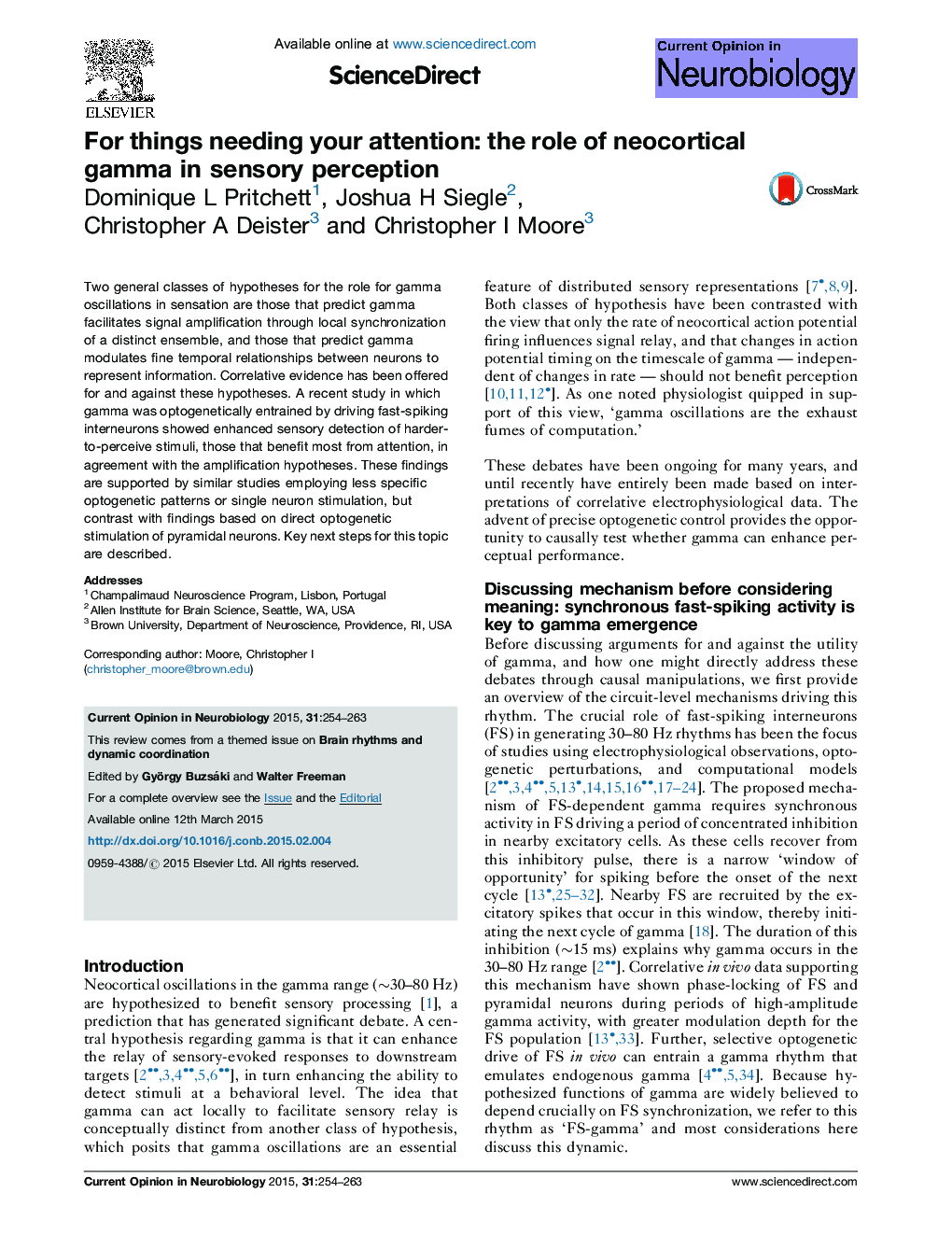| Article ID | Journal | Published Year | Pages | File Type |
|---|---|---|---|---|
| 6266259 | Current Opinion in Neurobiology | 2015 | 10 Pages |
â¢The role of fast-spiking interneurons in neocortical gamma has been widely studied.â¢Hypotheses about gamma's function range from local gain to distributed binding.â¢Studies using causal interventions support the local amplification hypothesis.
Two general classes of hypotheses for the role for gamma oscillations in sensation are those that predict gamma facilitates signal amplification through local synchronization of a distinct ensemble, and those that predict gamma modulates fine temporal relationships between neurons to represent information. Correlative evidence has been offered for and against these hypotheses. A recent study in which gamma was optogenetically entrained by driving fast-spiking interneurons showed enhanced sensory detection of harder-to-perceive stimuli, those that benefit most from attention, in agreement with the amplification hypotheses. These findings are supported by similar studies employing less specific optogenetic patterns or single neuron stimulation, but contrast with findings based on direct optogenetic stimulation of pyramidal neurons. Key next steps for this topic are described.
